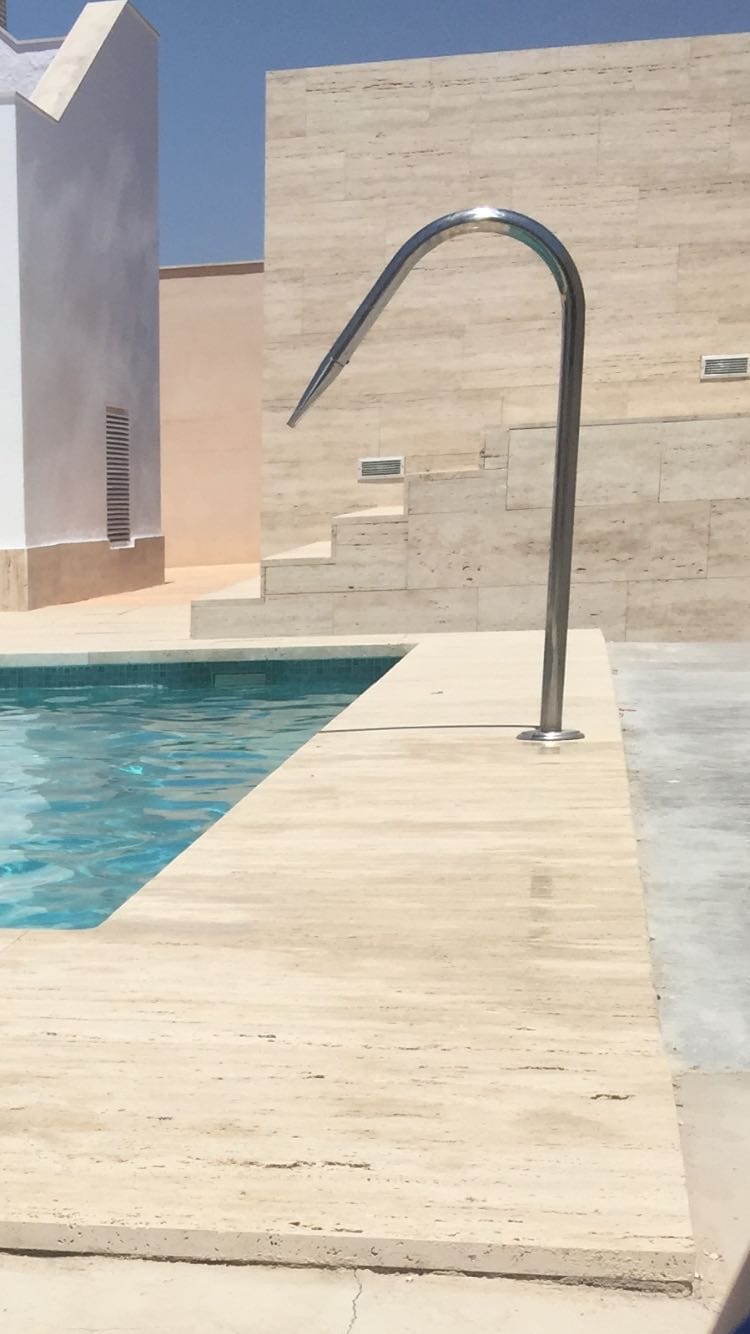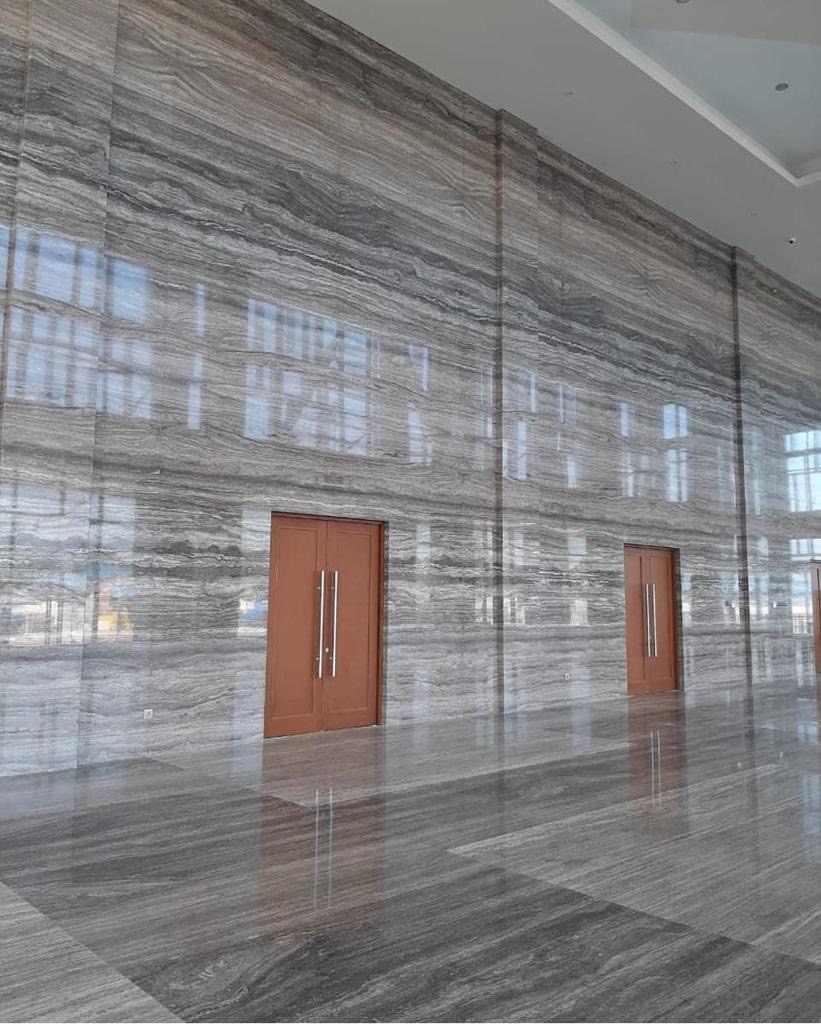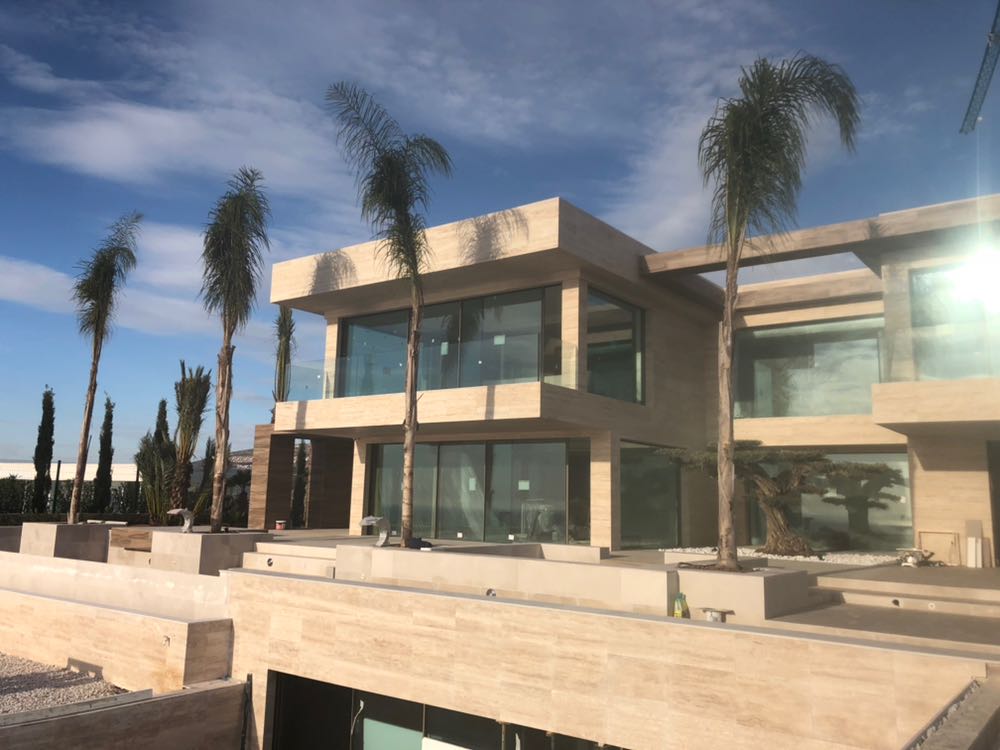What is travertine?
Travertine is a porous limestone formed by calcium carbonate deposits and which in the most common conditions has a light, yellowish-white colour.
It has been used since the times of ancient Rome as an ornamental stone in all kinds of constructions, wether public, such as monuments and churches, or private, for facade cladding or the decoration indoors. Thanks to its compact and crystalline texture, it offers a smooth and pleasant appearance both to the eye and the touch.
The word travertine comes from the Italian word of the same name, which means “stone of Tibur” (Tivoli), located precisely at the foot of the mountains in whose quarries the precious material was extracted.
Components and types
Travertine is a rock formed from the deposit of calcium carbonate in spring waters. It consists mostly of layers of calcite and aragonite, with hints of other minerals like limonite. These natural variations create stunning luminous colors, going from yellow and grey to brown and reddish tones.
Thus, as a sample of this vast range of tonalities, we have the following travertine marbles:
- Classic Travertine: With its staggered strips of beige and brown tones, this one is a classic in the history of construction and the material with which numerous buildings and monuments of ancient Rome were clad.
- Transparent Travertine: Honey or light brown in colour, transparent travertine looks as if it has just been polished by nature itself, with an exceptional shine and smoothness on its outer layer.
- Silver Travertine: This unique travertine, mined in quarries in countries such as Iran and Turkey, has a beautiful silvery colour and can be found with various shades of grey as well as brownish and greenish veins.
Advantages
Resistance and durability: This stone is suitable for carving and practically any treatment you wish to carry out on it. But what stands out above all is the hardness of its mineral composition, which makes it invulnerable to extreme thermal conditions or aggressive agents such as abrasion or humidity. It also has enormous resistance to knocks and scratches.
Another great advantage is that its colours do not change over the years, so that whatever travertine you choose, the work made with it will retain its beauty and qualities for life.
Versatility and beauty: It has been one of the most beautiful and elegant materials in existence over the centuries. In fact, there is a type of travertine that, due to its texture and shades, suitable for any surface and room in the house.
Easy to clean: It is easy to clean thanks to its special structure, wich allows any disinfectant liquid be applied to it and. In other words, all you have to worry about is killing germs.
TRAVERTINES
Uses and Applications
Interior and outdoors
Thanks to the above-mentioned characteristics, travertine is a very versatile material as it can be used both in façades and external surfaces, as well as for the ornamentation of any kind of interior elements.
Thus, inside home, it is often used in washbasins, countertops and all types of bathroom and kitchen cladding, not excluding floors and walls.
Outdoors, it is mainly used in swimming pool surrounds, terraces, outdoor corridors or the façade of a house due to its ability to withstand inclement weather (cold, rain, continuous exposure to sunlight, etc.), which will not diminish the colour or shine of travertine.
Finishes
The most traditional finishes that are used for the treatment of this stone are the ones listed below.
Raw finish: This finish offers a rustic appearance while preserving the porosity and original characteristics of the natural travertine stone. For all these reasons, it is perhaps the most recommendable for installation in exterior works.
Polished finish: By smoothing and polising the stone in its original state, the polishing process gives travertine a special shine and luminosity as well as an incredible softness and smoothness to the touch. This makes it suitable for interior surfaces, bathrooms and kitchens elements, such as washbasins and worktops.
Honed finish: Using a similar procedure to the previous one but without using the finest grain, honed finish gives a smooth, soft and matt aspect. This last characteristic is what makes this type of finish the most suitable for flooring and wall cladding.
Bush-hamered finish: With this technique we achieve a rough and uniform appearance and a completely non-slip surface. Thus, it is perfect for staris or swimming pool borders and floors. This finish is also often used for façades and wall cladding, especially outdoors.
Look at the results!

 Español
Español



